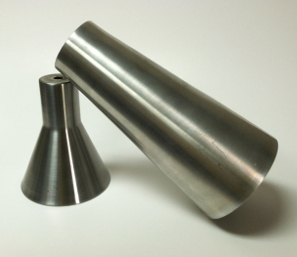Aluminum vs Steel: Which Metal Is Better?
by Adam Hornbacher of Wenzel Metal Spinning
Stainless Steel and aluminum are the two most popular materials used in both metal spinning and metal stamping. Each material has a defined and distinct set of characteristics that make it the right – or the wrong – material for the job. When selecting material for your spun part it’s important to consider the following: cost, the shape of the spinning, and most importantly the end application.
Read more comparisons below:
- Cost
- Corrosion Resistance
- Strength & Malleability
- Weight Differences
Common Products
With Wenzel Metal Spinning specializing in custom metal spun products, we have seen a high volume of general products. Some of our most common product types are:
What Is the cost difference between Aluminum vs Steel?
Cost and price are always an essential factor to consider when making any product. The price of steel and aluminum is continually fluctuating based on global supply and demand, fuel costs and the price and availability of iron and bauxite ore; however steel is generally cheaper (per pound) than aluminum (see galvanized vs stainless for more info on steel). The cost of raw materials has a direct impact on the price of the finished spinning. There are exceptions, but two identical spinnings (one in aluminum and one in steel) the aluminum part will almost always cost more because of the increase in the raw material price.
What is the corrosion resistance for aluminum vs steel?
While malleability is very important for manufacturing, aluminum’s greatest attribute is that it is corrosion resistant without any further treatment after it is spun. Aluminum doesn’t rust. With aluminum, there is no paint or coating to wear or scratch off. Steel or “carbon steel” in the metals world (as opposed to stainless steel) usually need to be painted or treated after spinning to protect it from rust and corrosion, especially if the steel part will be at work in a moist, damp or abrasive environment.
What is the strength of aluminum vs steel?
Aluminum is a very desirable metal because it is more malleable and elastic than steel. Aluminum can go places and create shapes that steel cannot, often forming deeper or more intricate spinnings. Especially for parts with deep and straight walls, aluminum is the material of choice. Steel is a very tough and resilient metal but cannot generally be pushed to the same extreme dimensional limits as aluminum without cracking or ripping during the spinning process.
What is the weight difference of aluminum vs steel?
Even with the possibility of corrosion, steel is harder than aluminum. Most spinnable tempers and alloys of an aluminum dent, ding or scratch more easily as compared to steel. Steel is strong and less likely to warp, deform or bend underweight, force or heat. Nevertheless, the strength of steel’s tradeoff is that steel is much heavier/much denser than aluminum. Steel is typically 2.5 times denser than aluminum.
The final application of the part will ultimately determine which material the part would be spun from, balancing all the limitations and advantages of each material. On some spinnings, it’s an easy call, while others are a tougher decision. If you or your engineering departments are on the fence with steel vs. aluminum dilemma, please contact the authority on metal spinnings at Wenzel Metal Spinning, Inc. and we will be happy to provide you with our expert opinion and supporting information. Additional information about steel and aluminum can be found on our materials page.
Steel Uses & Applications
| Metal Grade | Common Uses | Applications |
| 304 Stainless Steel | Hoppers, Tank Heads, Cones, Hemispheres, Reducers, Air Movement Parts, Filtration Components | Automotive, Aerospace, Food/Drug, Marine, Plastics |
| 316 Stainless Steel | Chemical Processing Equipment, Laboratory Benches & Equipment, Pollution Control Equipment, Food Processing Equipment, Condensers, Evaporators | Automotive, Aerospace, Electronics, Medical, Pharmaceuticals |
| 409 Stainless Steel | Heat Exchangers, Heating System Components, Off-Highway Exhaust Parts | Automotive, Aerospace, Heating |
| 430 Stainless Steel | Sinks, Dishwashers, Range Hoods, Roofing, Restaurant Equipment | Architecture, Construction, Food/Restaurant |
Aluminum Uses & Applications
| Metal Grade | Common Uses | Applications |
| 1100 Aluminum | Chemical Equipment, Electrical Components, Decorative Parts, Spun Hollowware, Tanks, Sheet Metal | Air Filtration & Movement, Chemical Processing, Cryogenics, Electrical, Oil &Gas, Power Generation, Telecommunications |
| 3003 Aluminum | Chemical Handling Equipment, Lawn Furniture Components, Architectural Components, Food Packaging | Air Filtration & Movement, Bulk Handling, Chemical Handling, Cryogenics, Oil &Gas, Telecommunications, Trucks & Trailers |
| 5052 Aluminum | Highway & Road Signs, Marine Boats, Fuel Tanks, Flooring Panels, Pressure Vessels, Kitchen Appliances | Aerospace, Marine, Transportation, Off-highway Automotive |
Contact Us
Let’s get started! Please fill out the form to let Wenzel Metal Spinning assist you with any questions about the design of your part, our capabilities, or to find out how we can help you reduce the cost of your current metal spinning.

